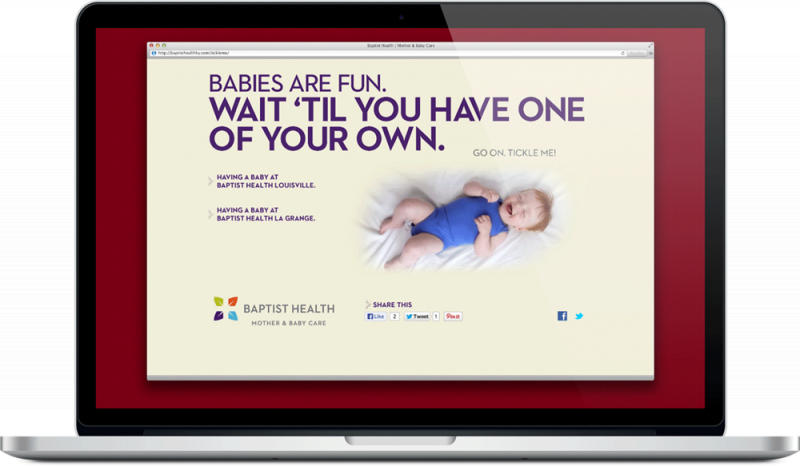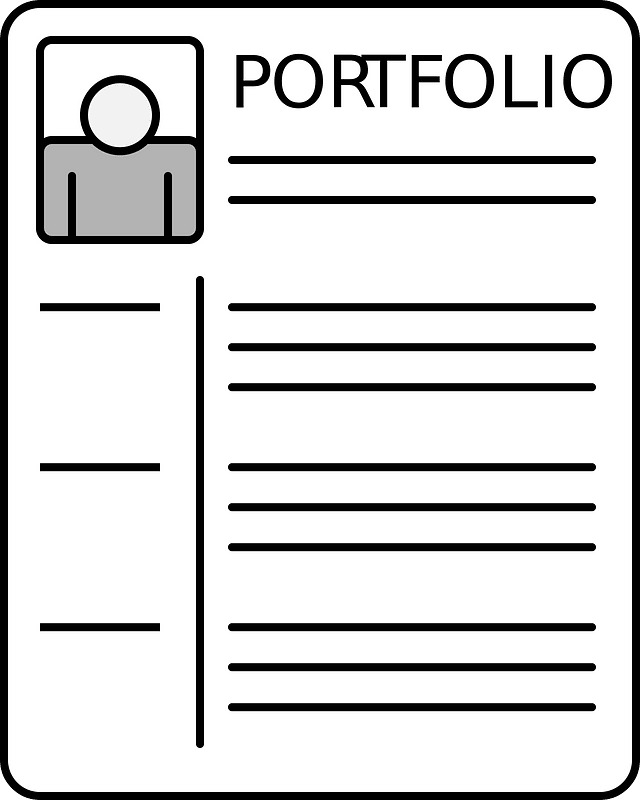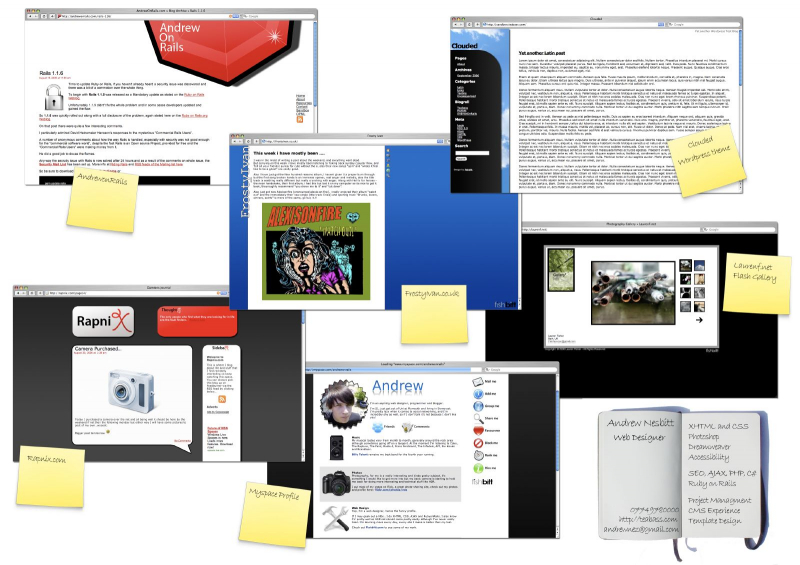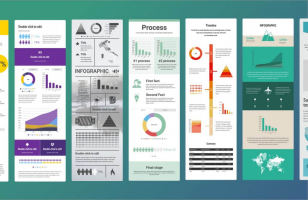Top 6 Steps To Make A Portfolio Website
Portfolio appears to bring a lot of outstanding project aggregation benefits that we have done in the past. Portfolio website (online portfolio) helps to show ... read more...the candidate's ability, experience in the working process, outstanding skills of the candidate through the process of working and developing. This is a document that helps people accurately assess the capacity and potential of each individual. Therefore, how to create a professional and eye-catching portfolio website is essential. We need the following basic steps.
-
Everyone has a different vision and goal for their online portfolio. You must determine whether you want to develop professional services or want to diversify service areas. Each will have its pros and cons. For example, in diverse fields, customers will have many options and specialized for a field, and customers will prioritize choosing you when they have a need to use that service.
Start with the main function you want your portfolio to serve. A portfolio with a clear purpose and vision stands out, as opposed to a fragmented and difficult-to-navigate portfolio. In general, there are two ways you can structure your portfolio. You can design it as a brief introduction to your work or as a marketing tool for your business.
Your portfolio viewers may only have limited time to go through your entire portfolio, so consider planning your layout in such a way that you can convey important pieces of information easily. You should start your creation with a board or content list of what you have to offer. This makes it easy for the reader to navigate the content or subsequent sections. Capturing the reader's attention and motivating them to read more is essential. It is best to keep the content concise, not rambling because long lines will cause a loss of interest for readers.

Photo on flickr https://www.flickr.com/photos/182229932@N07/48342943647 
Photo by Nick Youngson on Pix4free.org https://www.thebluediamondgallery.com/notepad01/p/portfolio.html -
After you decide on the type of online portfolio you want to build, your next step is to choose whether you should build that website yourself or use a website builder. If you are a programmer or have basic knowledge of technology and programming, you can be creative and design your own. There are many sources of guidance and reference that you can browse to gain knowledge, then put into practice and create personal results. If you are not a programmer, the best option would be to use a website builder like WordPress, Squarespace, or Wix. These sites provide templates and make it simple to showcase your work online.
In the past, to build a website, you had to know how to code or hire a programmer. Now, you can use website builders, which are service providers that allow users to build websites using simple tools. They handle the programming and provide beautiful templates so you can easily customize the text, designs, images, and more. Today, millions of people with no design or programming experience can still use website creation tools to build an online presence. Using a website builder can be a great option for both large and small projects. Website creation tools are ideal for those with little or no technical experience. You can tweak your website on your own without hiring a professional. Website creation tools are also suitable for those who want to hire a web designer to build the website initially and want to be able to customize the site later.

Photo on Squarespace thatjameswilliamson.com/baptist-mother-baby-digital 
Photo by TKaucic on Pixabay -
You don't need to include all of your work in your portfolio, but choose work that you're proud of and illustrate a range of experiences. Focus on the type of work you want to do more of in the future. For example, if you used to be a fashion designer and also run your own cafe, but now you are only focused on fashion, consider adding some highlights of your decor or idea for a cafe on your website. Limit mentioning your business history or sales. Customers if they want to come to your website for fashion advice, usually will not be interested. How did you run a coffee shop in the past, they only care about how your taste in the past and present stands out.
A portfolio will be designed according to your preferences and what you want to show your customers. The more details you provide, the better because customers will have more confidence in you. Please clearly state the awards you have won, this will demonstrate your ability more. Organize your work together and merge them into one project. In addition to the results, include the journey you took on those tasks, so people understand the details, the context, and how you made them work. Remember to add captions and illustrations to increase realism and not be boring.

Photo on flickr https://www.flickr.com/photos/nez/239148109 
Photo on idexaweb https://www.idexaweb.com/siti-web/pagine-pubblicitarie-per-riviste-di-settore/ -
Your introduction is your chance to let future customers know who you are and what you do. It complements your portfolio and gives the reader a little more background information about you. A good place to start is to be clear about what people are hiring you to do. Give your viewers your basics. Let everyone know who is behind the website, where you are, and what experiences you have.
Anyway, there are thousands of portfolio websites with a variety of styles. You only have the first few minutes to impress customers with your website's potential, and what you can offer them in the future. Instead of simply saying I have experience in one area, I used to work in another. Show everyone that you have done the best, most special things. Sometimes it's not a big explosion, it just needs to be a step forward, a difference from the previous path is enough to make an impression. If possible, ask for data from old companies and projects, to increase the authenticity of the results you present here. However, do not lecture and show too much, it will backfire, making others afraid that you are lying.
The information provided should be complete, not too personal, and private, with a contact method, if any, so that people can find you as soon as they need it. Be creative about how you communicate the value you bring to your customers without being too boring.

Photo on maxpixel https://www.maxpixel.net/Pixel-Cells-E-Learning-Work-Document-Portfolio-3947911 
Photo on picpedia https://www.picpedia.org/clipboard/stock-portfolio.html -
Most online portfolios include your contact information with a button that instructs potential customers to contact them via email or phone. This is simple enough, but a page or contact section is also an opportunity to stand out. The easier the information is to see and attract, the more likely customers will click to contact you.
One benefit of this method is that it allows you to keep track of who is interested in your work. This approach also allows you to tailor your portfolio to the clients you reach. For example, if you are a copywriter with experience in a variety of industries, you could offer a portfolio to clients in tech manufacturing, home appliances, children, food, etc. If you are not allowed to publicly display specific work due to confidentiality agreement, this method may provide a solution.
Even the best portfolio will be ignored if it is presented in wordy blocks of text. Once you've organized the basics of the projects you want to share, what you'll say on the about page, and how you'll organize your portfolio. Now is the time to come up with layout ideas and designs to make the most of what you want your clients to know.
Arnau Ros Youtbue Channel developedbyed Youtube Channel -
Of course, each Portfolio website will have different products, experiences, and services. But the presentation on non-letters is relatively bland and general. If you want to make an impression, you must have a unique, beautiful, creative, and innovative portfolio design plan. If you work in industries related to design, graphics, and marketing, the impression is even more important.
After drafting your content and development plan, it's time to set up your portfolio layout. You can completely sketch the interface layout according to your preferences and creativity. However, another way is to use templates, pre-designed layouts created by professional designers, or edit directly in Canva. Many platforms offer extensive libraries of free website templates with hundreds of options until you find a layout you love. Choosing specific illustrations for each project is an important factor affecting whether viewers are interested in watching or not.
Check out the ideas you like as you browse through some of the best portfolio designs. If you're into photography, Freya McCartney's one-page portfolio website is a living resource. John Green, a bestselling novelist, will provide you with the best ways to write summaries for a website. Use Green's website design as inspiration if you want to showcase your expertise succinctly.
Ali Solanki Youtube Channel H-EDUCATE Youtube Channel

























